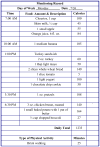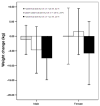Behavioral treatment of obesity
- PMID: 22098808
- PMCID: PMC3233993
- DOI: 10.1016/j.psc.2011.08.006
Behavioral treatment of obesity
Abstract
This review has shown that behavioral treatment is effective in inducing a 10% weight loss, which is sufficient to significantly improve health. Weight loss maintenance is challenging for most patients. Long-term outcomes have the potential to be improved through various methods including prolonging contact between patients and providers (either in the clinic or via Internet or telephone), facilitating high amounts of physical activity, or combining lifestyle modification with pharmacotherapy. Innovative programs also are being developed to disseminate behavioral approaches beyond traditional academic settings.
Conflict of interest statement
Disclosures: The authors have no financial disclosures or conflicts of interest to declare.
Figures








References
-
- NHLBI. Clinical guidelines on the identification, evaluation, and treatment of overweight and obesity in adults: Executive summary. expert panel on the identification, evaluation, and treatment of overweight in adults. Am J Clin Nutr. 1998;68:899–917. - PubMed
-
- Brownell KD. The LEARN Program for Weight Management. Dallas: American Health Publishing Company; 2000.
-
- Wing RR. Behavioral weight control. In: Wadden TA, Stunkard AJ, editors. Handbook of Obesity Treatment. New York: The Guilford Press; 2002. pp. 301–316.
Publication types
MeSH terms
Substances
Grants and funding
LinkOut - more resources
Full Text Sources
Other Literature Sources
Medical

